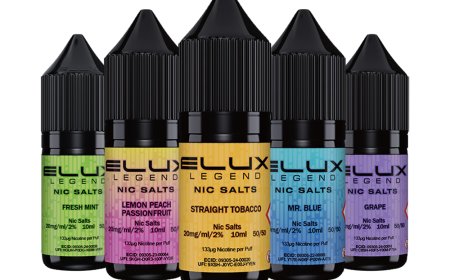Barium Carbonate: Properties, Uses, and Safety Considerations
Barium Carbonate
Barium carbonate (BaCO?) is an important inorganic compound with diverse industrial applications. Unlike its more famous cousin barium sulfate (used in medical imaging), barium carbonate plays crucial roles in manufacturing processes ranging from glass production to rat poison formulations. This white, odorless powder has unique chemical properties that make it both useful and potentially hazardous if mishandled. In this comprehensive guide, we'll explore barium carbonate's characteristics, production methods, primary applications, and essential safety precautions.
Chemical and Physical Properties
Barium carbonate occurs naturally as the mineral witherite but is more commonly produced synthetically. Its notable properties include:
-
Molecular weight: 197.34 g/mol
-
Melting point: 1,360C (2,480F)
-
Density: 4.286 g/cm
-
Solubility:
-
Nearly insoluble in water (22 mg/L at 20C)
-
Soluble in acids (with effervescence)
-
Insoluble in alcohol
-
The compound exhibits rhombic crystal structure at room temperature, transforming into hexagonal crystals when heated above 811C. Its thermal stability makes it valuable in high-temperature industrial processes.
Production Methods
1. Natural Occurrence
Witherite (natural BaCO?) deposits exist in:
-
England (the type locality)
-
United States
-
Canada
-
China
However, natural sources account for less than 5% of commercial barium carbonate due to economic factors.
2. Industrial Synthesis
Modern production primarily uses two methods:
A. Carbonation Process
-
Barium sulfide (BaS) solution is prepared from barite (BaSO?)
-
Carbon dioxide is bubbled through the solution:
BaS + CO? + H?O ? BaCO? + H?S
B. Double Decomposition
Barium chloride reacts with sodium carbonate:
BaCl? + Na?CO? ? BaCO? + 2NaCl
The resulting precipitate is filtered, washed, and dried to produce commercial-grade barium carbonate.
Industrial Applications
1. Glass Manufacturing (Primary Use)
Barium carbonate serves three critical functions in specialty glass production:
-
Flux agent: Lowers melting temperature
-
Refractive index modifier: Enhances optical clarity
-
X-ray absorption: Used in cathode ray tubes and radiation shielding glass
2. Ceramic Industry
In tile and pottery production:
-
Produces brilliant white finishes
-
Prevents efflorescence (salt migration)
-
Strengthens ceramic bodies
3. Barium Ferrite Production
Essential for manufacturing permanent magnets used in:
-
Speakers
-
Electric motors
-
Magnetic recording media
4. Chemical Precursor
Used to synthesize other barium compounds:
-
Barium titanate (for capacitors)
-
Barium nitrate (pyrotechnics)
-
Barium chloride (water treatment)
5. Rodenticides
Historically used in rat poisons (now banned in many countries):
-
Causes cardiac arrest in rodents
-
Being replaced by safer alternatives
6. Other Applications
-
Brick and clay additive
-
Electroplating solutions
-
Optical lens production
-
Sulfate removal in brine purification
Safety and Handling
Toxicity Profile
Barium carbonate is classified as:
-
Acute oral toxicity(LD50 rat): 418 mg/kg
-
Harmful if swallowed
-
May cause respiratory irritation
Exposure Risks
-
Inhalation: Dust can irritate respiratory tract
-
Ingestion: Converts to soluble barium salts in stomach acid
-
Skin contact: Generally low absorption but may cause irritation
Poisoning Symptoms
Barium ion interference with potassium channels causes:
-
Muscle twitching
-
Hypertension
-
Cardiac arrhythmias
-
Paralysis (in severe cases)
First Aid Measures
-
Ingestion: Administer sodium sulfate solution to precipitate barium as insoluble sulfate
-
Inhalation: Move to fresh air, provide oxygen if needed
-
Skin contact: Wash thoroughly with soap and water
-
Eye contact: Flush with water for 15 minutes
Regulatory Status
-
OSHA PEL: 0.5 mg/m (as Ba)
-
EU Classification: Toxic (T)
-
WHMIS: D2B (Toxic material)
Environmental Considerations
Ecotoxicity
-
Aquatic toxicity: LC50 (fish) >100 mg/L
-
Soil mobility: Low due to insolubility
-
Biodegradation: Not applicable (inorganic compound)
Disposal Methods
-
Preferred: Conversion to insoluble barium sulfate
-
Landfill: Only at approved hazardous waste facilities
-
Recycling: Recover barium content when economically viable
Market and Economics
Global Production
-
Annual output: ~7 million metric tons
-
Major producers:
-
China (80% of supply)
-
India
-
Germany
-
United States
-
Price Trends
-
Industrial grade: $300-$500/ton
-
High purity grade: $800-$1,200/ton
-
Market drivers:
-
Glass industry demand
-
Environmental regulations
-
Alternative material development
-
Emerging Alternatives and Future Outlook
Substitute Materials
-
Glass industry: Barium-free formulations
-
Ceramics: Alternative fluxes
-
Magnets: Rare-earth compounds
Research Directions
-
Nanostructured barium carbonatefor catalysis
-
CO? sequestrationapplications
-
Biomedical applications(limited due to toxicity)
Conclusion
Barium carbonate remains an industrially significant chemical despite its toxicity concerns. Its unique combination of properties - particularly in glass and ceramic applications - ensures continued demand, though environmental and health regulations are driving innovation in alternative materials. Proper handling procedures and waste management can mitigate risks associated with this useful but potentially dangerous compound. As industries evolve toward greener chemistry, barium carbonate may see reduced usage in some applications while maintaining niche roles where its specific characteristics prove irreplaceable.









































